Infrared camera optimizes Laser Powder Bed Fusion 3D printing
- Details
- Hits: 1641
Discover the benefits of laser melting metal powders: The 3D Print of metals is becoming increasingly popular. In particular, powder bed-based laser beam melting or Laser powder bed fusion (LPBF) allows delicate and very complex structures and always opens up new applications. The quality of the process depends heavily on the right temperatures. To measure this, the scientists use Fraunhofer ILT Infrared camera from Optris.
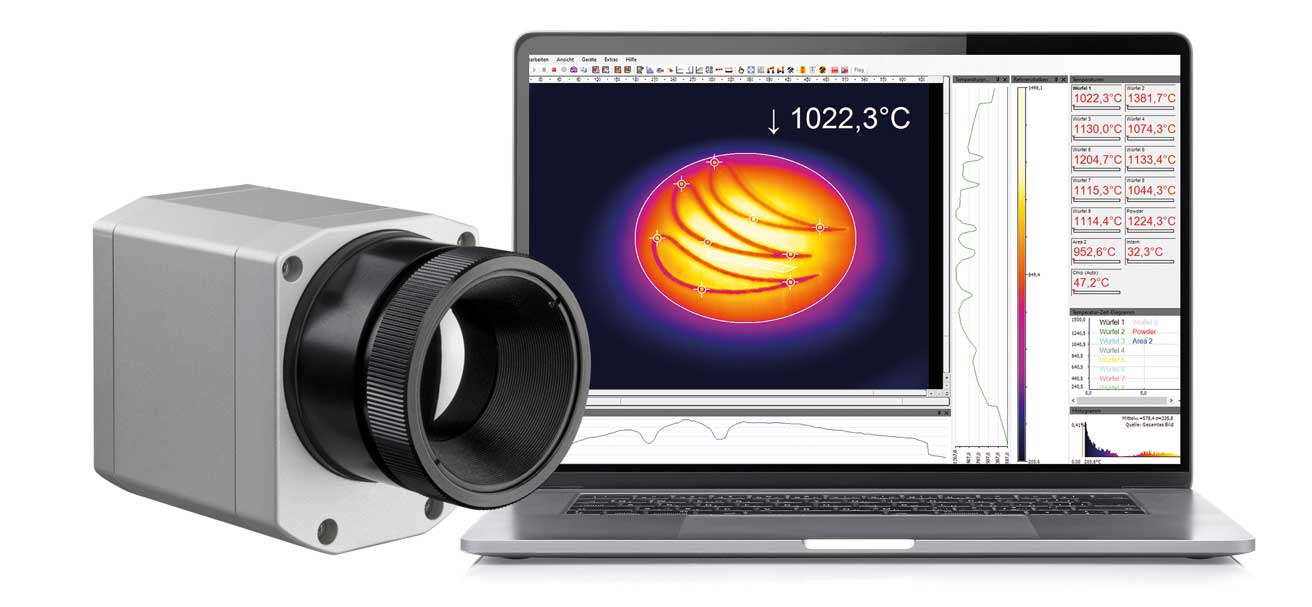
Contents
Laser melting layer by layer
 The powder bed based laser beam melting, English Laser Powder Bed Fusion (LPBF) has been one of the most promising processes for over 25 years additive manufacturing of metals. It was developed and patented in 1996 at the Fraunhofer Institute for Laser Technology ILT. The innovative 3D printing process can be used to produce components with complex geometries. The LPBF is very precise and allows parts to be manufactured that would not be possible at all with subtractive methods.
The powder bed based laser beam melting, English Laser Powder Bed Fusion (LPBF) has been one of the most promising processes for over 25 years additive manufacturing of metals. It was developed and patented in 1996 at the Fraunhofer Institute for Laser Technology ILT. The innovative 3D printing process can be used to produce components with complex geometries. The LPBF is very precise and allows parts to be manufactured that would not be possible at all with subtractive methods.
LPBF – The procedure
LPBF laser melting begins with a fine powder, which is distributed in thin layers on a base plate. A precisely controlled laser beam then melts targeted areas of the powder to build up the desired component layer by layer.
After the material has cooled, a solid layer is created, which forms the basis for the next layer. After a shift the Base plate lowered and another layer of powder applied. This process is repeated until the three-dimensional component is complete and only needs to be removed from excess powder.
With layer thicknesses between 10 and 100 µm This laser melting enables exceptional precision and attention to detail. The resulting components have an impressive specific density of up to 100%, meaning that their mechanical properties are in no way inferior to subtractively manufactured parts. This high quality makes LPBF ideal for rapid prototyping and small series where precision and material quality are crucial.
 Reading tip: Three ways to get started with generative AI
Reading tip: Three ways to get started with generative AI
Although the manufacturing speed of LPBF is slower compared to traditional manufacturing processes such as SLM, the benefits in terms of flexibility, precision and material variety outweigh the disadvantages. LPBF opened new Horizons in product development and offers innovative solutions for complex designs.
Groundbreaking feasibility studies
The renowned Fraunhofer Institute for Laser Technology ILT continuously drives innovation in the field of additive manufacturing. In partnership with leading industry players, groundbreaking feasibility studies are being conducted there that push the boundaries of laser melting technology. A particular focus is on the production of complex geometries and research into new materials.
Tim Lantzsch, head of the Laser Powder Bed Fusion department at Fraunhofer ILT, comments: “Current projects, for example, involve using metals with a high melting point, such as tungsten or molybdenum. However, these are difficult to process reliably due to the high melting point of sometimes over 3000 °C." In order to carry out such and similar research projects, the Fraunhofer ILT operates several LPBF laboratory facilities.
Important measurement: temperature
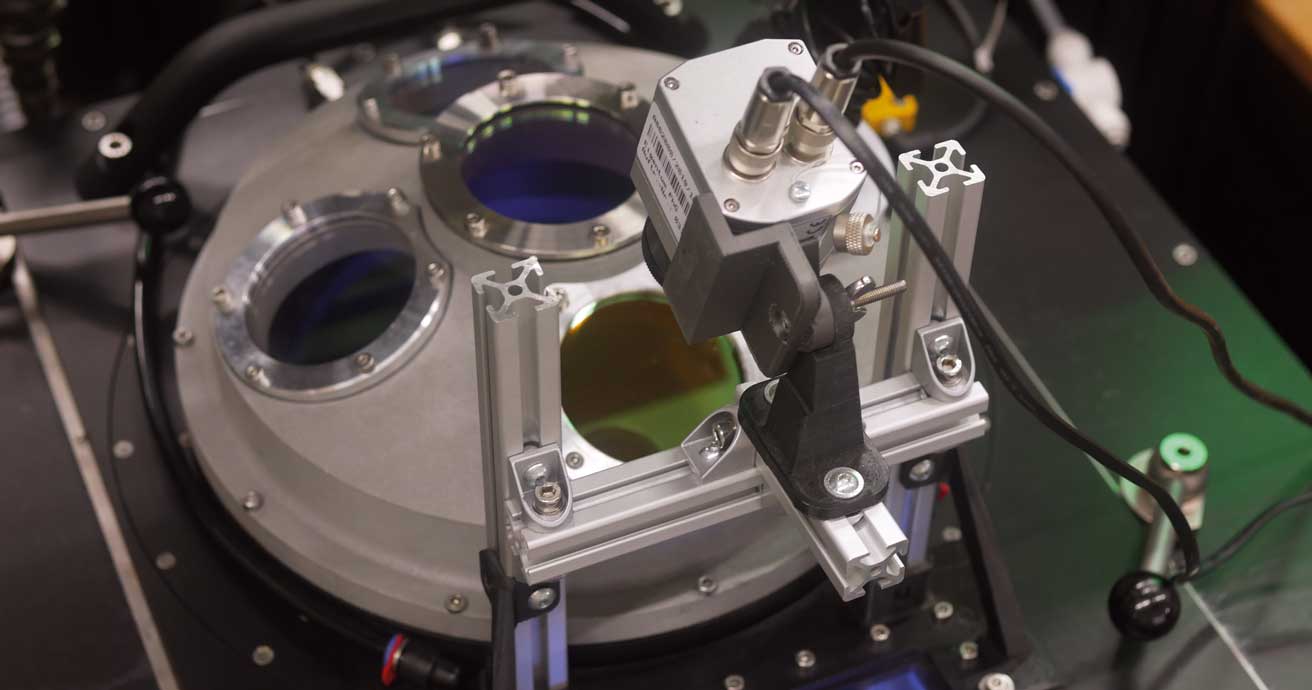
In the sophisticated 3D printing process of Laser Powder Bed Fusion (LPBF). correct temperature a decisive factor for the quality of the end products. The laser in LPBF systems heats the material extremely quickly, at rates of up to 1 million K/s, followed by equally rapid cooling.
However, these extreme temperature changes can lead to material stress, shrinkage, phase transformations and other physical effects that can affect component quality. “Cracking and plastic deformation are typical problems that can ultimately lead to rejects,” explains Tim Lantzsch.
 To overcome these challenges, Fraunhofer ILT has developed innovative solutions. “For example, we heat the base plate to minimize the stresses caused by excessive temperature gradients,” says Andreas Vogelpoth, specialist in Process & Systems Engineering.
To overcome these challenges, Fraunhofer ILT has developed innovative solutions. “For example, we heat the base plate to minimize the stresses caused by excessive temperature gradients,” says Andreas Vogelpoth, specialist in Process & Systems Engineering.
The optimal temperature of the base plate depends on the material in question and must be carefully regulated throughout the entire process. “The distance to the heated base plate increases from layer to layer Powder bed is a poor conductor of heat, radiation plays a role and of course the laser also brings in heat,” says Mr. Vogelpoth.
Accordingly, the heating must be adjusted as the process progresses. This continuous adjustment of the heating during the LPBF process ensures that components are manufactured to the highest possible quality and the risk of defects and scrap is minimized.
To optimize this process, precise monitoring of temperatures is required. To do this, the researchers use an infrared camera Type PI640 from Optris, which can measure temperatures up to 1500 °C. The IR camera is mounted outside the process chamber, into which a zinc selenide window is integrated. The compact infrared camera can be easily mounted above the window. With a resolution of 640 x 480 pixels, it can also resolve smaller component structures.
Changing emissivity
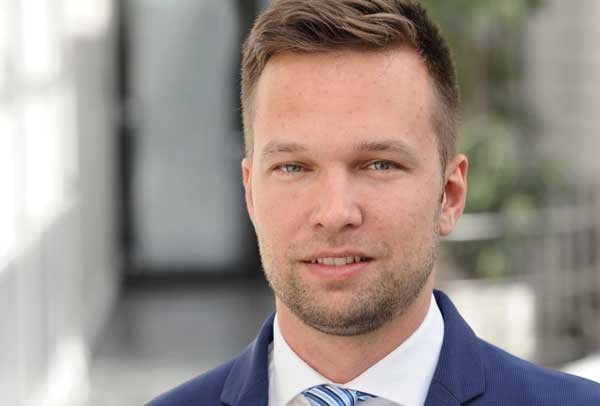 Precise temperature measurement plays a crucial role in the additive manufacturing process, especially in Laser Powder Bed Fusion (LPBF). “For example, the emissivity of powder and solid of the same metal are different and there is a dependency on that surface finishsays Andreas Vogelpoth.
Precise temperature measurement plays a crucial role in the additive manufacturing process, especially in Laser Powder Bed Fusion (LPBF). “For example, the emissivity of powder and solid of the same metal are different and there is a dependency on that surface finishsays Andreas Vogelpoth.
In order to overcome this challenge, Fraunhofer ILT extensive series of tests carried out in which the temperature was measured using both infrared cameras and thermocouples. Particularly during component construction, the infrared camera provides important data about the temperature of the material after the melt pool has solidified again. Controlled via a digital interface, the camera takes measurements shortly after the laser is deactivated and before a new layer of powder is applied.
These measurements provide valuable insights into various thermal effects, for example the cooling behavior after the melting process and the heat dissipation through the powder bed. This data makes it possible to adjust the heating control of the component to optimize the quality of the end product and avoid the production of defective parts.
Thermography images can be easily evaluated
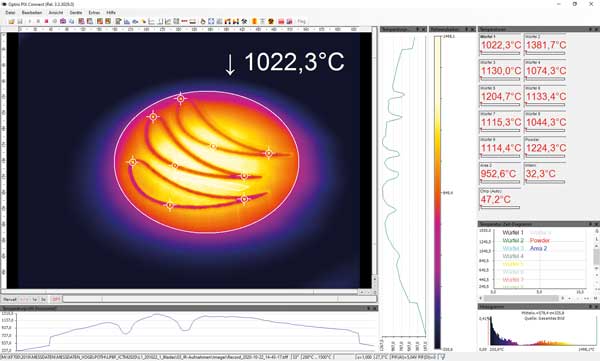 The PI640 infrared camera from Optris has a USB interface connected to a PC, on which the specially developed analysis software PIX Connect is installed. This thermal imaging camera enables precise and efficient real-time analysis of thermography images.
The PI640 infrared camera from Optris has a USB interface connected to a PC, on which the specially developed analysis software PIX Connect is installed. This thermal imaging camera enables precise and efficient real-time analysis of thermography images.
The PIX Connect software, which comes standard with the Optris infrared cameras, offers extensive functions for image capture and analysis as well as for archiving the recordings. Andreas Vogelpoth emphasizes the importance of the open format for image storage, which enables seamless integration into various systems and easy further processing of the data. In addition, the user-friendly interface of PIX Connect makes the evaluation of the thermography images much easier.
It has been around for around five years PI640 used at Fraunhofer ILT and replaced pyrometers there, which only enabled selective temperature measurements. “Overall, the infrared camera from Optris is very well suited for our purposes,” summarizes Tim Lantzsch: “It is compact, therefore easy to integrate mechanically and easy to use.” This makes the PI640 infrared camera a valuable instrument for precise temperature measurements and analyzes in additive manufacturing and beyond.
FAQ
How does the LPBF process work?
The Laser powder bed fusion (LPBF) process is a form of 3D printing and enables the additive manufacturing of complex geometries that are difficult or impossible to produce using conventional methods. After the printing process is complete, the excess powder is removed and the component is reworked if necessary.
What is SLM procedure?
SLM means Selective laser melting is an additive manufacturing process in which a high-precision laser fuses metal powder layer by layer. Complex components can be created directly from the CAD data. A digital design is broken down into thin cross-sections, which the laser then melts point by point and layer by layer on the construction platform. This process enables the production of high-density components and complex structures that often cannot be produced using conventional methods.
You might also be interested in...

Artificial Intelligence | trends and developments
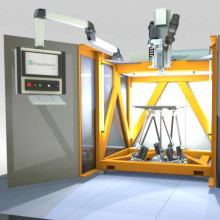
3D printer | Additive manufacturing of plastic parts
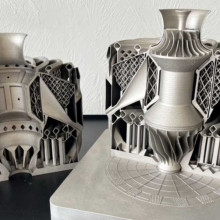
3D printer metal | Amazing Possibilities
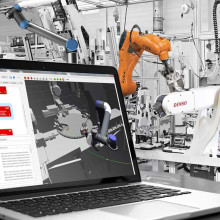
Programming Robots | software and controls
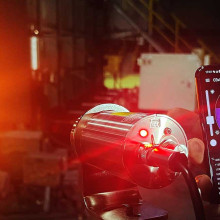
Compact infrared thermometer with smartphone & tablet app

Thermal Imaging Camera | Innovations for industrial applications

The authors are Andreas Theilacker and Torsten Czech, both engineers at Optris GmbH in Berlin.
